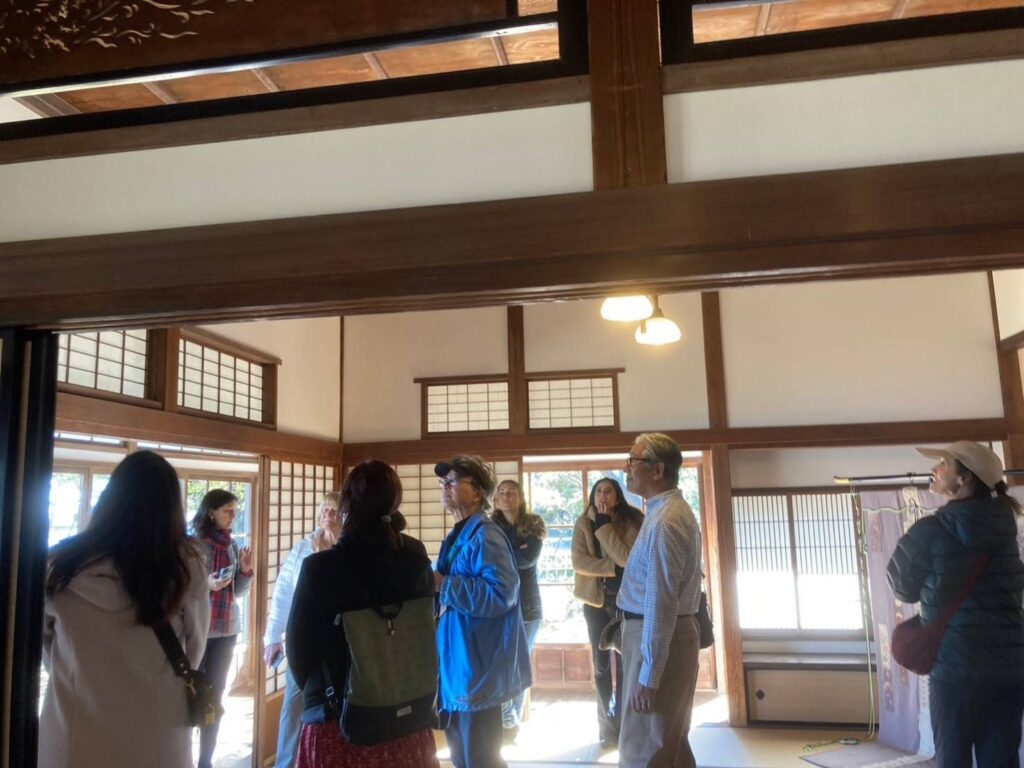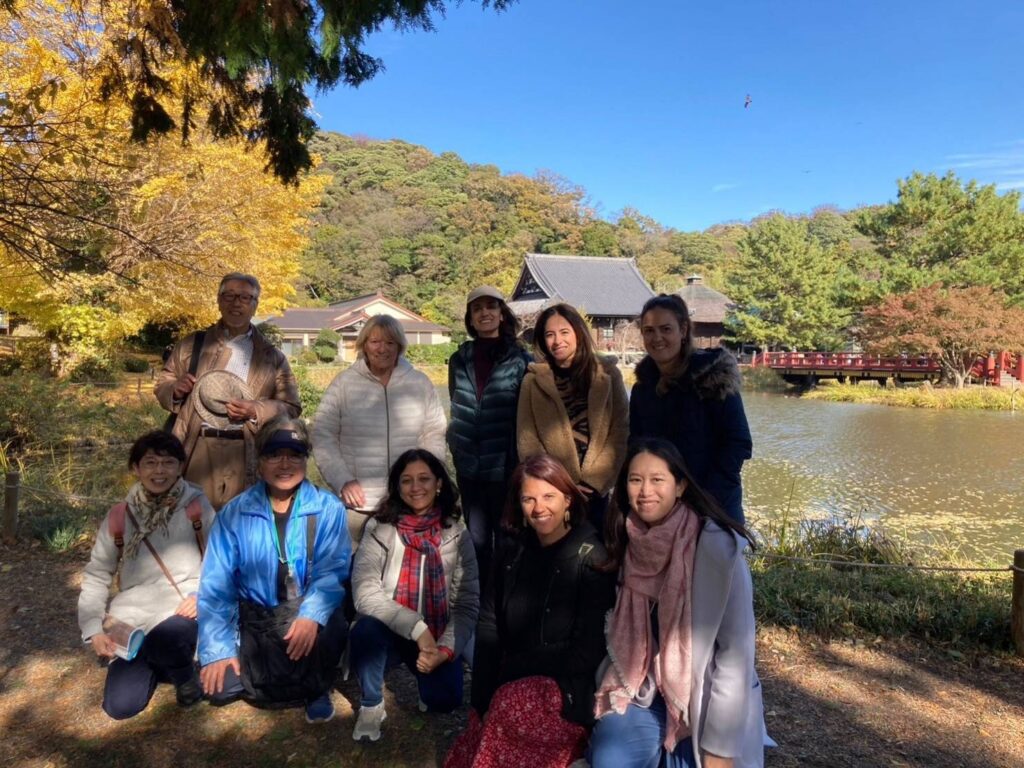Date & Time: Wednesday, November 29, 2023, 8:40 a.m. to 1:40 p.m.
Spots: Kanazawa-Hakkei (Nojima Viewpoint, Duke Itoh’s villa, Shomyoji Temple)
Took a JR Negishi Line train from Ishikawacho Sta. to Shinsugita Sta. Transferred to Kanazawa Seaside Line and got off at Nojima Koen Sta. Walked to Nojima, first to the viewpoint, then to Hirobumi Itoh’s villa. Took Seaside Line again to Uminokoen Minamiguchi Sta. and walked to Shomyoji Temple.
Participants: seven Saint Maur International School guardians (two from Spain and one from each of these: France, India, Mexico, Thailand, and the UK)
Staff: four KSGG guides.
On a bit windy but mostly sunny day at the end of November, a party of seven Saint Maur School[1] guardians (six mothers and one grandmother from different countries) visited Kanazawa-Hakkei. This half-day tour was planned as a part of the joint project with KSGG and the school for the students’ guardians, especially new comers, to get acquainted with Japanese culture and history as well as survival skills in Japan. Kanazawa-Hakkei, a town on the coast to the south of Yokohama, used to be a popular tourist destination from the 17th century to the early 20th century. The name Hakkei means eight beautiful sights. Although most of the fine sights samurai loved got lost due to industrial development after World War II, the place still has several historic spots worth visiting.
First, the party went up to the top of Nojima, a small island with a round, 57-meter-high hill. At the top, the participants were excited by the grand 360-degree panorama, with Tokyo Bay in the east, a vast test course of Nissan Motors in the south, and over the skyline in the west, Mt. Fuji. Although most of the participants were speakers of English as a second language, they listened to the guide explain the history of the Kanazawa-Hakkei, including the episode of Matthew Perry, an American naval commodore who led a fleet of huge black battleships into Tokyo Bay in 1854. He anchored just off the shore of Nojima, got fascinated with the beauty of the place, and named the bay American Anchorage. His ships amazed and as frightened the samurai government enough to open up the long-closed diplomatic gate of Japan to the world.
After going down the hill, the party visited the villa of Hirobumi Itoh, the first prime minister of Japan, who loved Nojima and its neighborhood. The participants entered the doorway of the humble-looking, single-story wooden building with a thatched roof and were soon impressed with the elaborate interior designs. While listening to the guide talk about the details of the villa and Itoh’s career, they noticed that the cozy house was designed in a practical, traditional Japanese style. They also seemed to be enjoying the feel of tatami mats while walking from room to room, feeling as if each of them was the guest of the 19th-century prime minister. One of the participants from the UK asked about a painting of a three-masted sailing ship. She learned that it was the ship young Hirobumi Itoh sailed on to the UK. She also made sure that it was the Victorian Era. Another participant asked if there was any heating system in the house. She was surprised to learn that the only heater available in those days would be a hibachi, a large ceramic bowl to burn charcoal inside.

Participants listen to the guide explaining the interior of Hirobumi Itoh’s villa.
Then, the party went to Shomyoji, a Buddhist temple established in the 13th century by a samurai lord of the most influential clan in the Kamakura shogunate court. The temple is also known as the site of the first library in Japan. First, at the temple gate, the party looked up a pair of giant wooden, fierce-looking statues of guardian deities and listened attentively to the guide’s talk about the origin and history of this temple. One participant from Thailand liked to talk with the guide about the similarities and differences of Buddhism in her home country. Then they entered the temple site and were immediately attracted by the Pure Land garden[2] in front of the main hall. All of the party were strongly fascinated by the contrast of the golden leaves of big ginkgo trees against the clear blue sky and the shiny red and gold bridges over the pond. The garden looked very exotic to the participants. Besides, the temple site was quiet enough to make any of them fully enjoy the special atmosphere of the place. Everyone took a lot of photos of each other and selfies on the bridges.
Another of the participants was a grandmother from Spain visiting the family for a short time. Although her English skills were limited, she walked happily, talked a lot with other participants, and enjoyed everything she saw.
On the train back to Ishikawacho Sta., they kept talking happily with each other, sharing the excitement of the half-day tour in which they surely touched a historic reminiscence of Yokohama.

The Saint Maur tour party with KSGG guides on the Pure Land Pond, Shomyoji Temple
**************************
1.^ Saint Maur International School is in Yokohama, in operation for 151 years as the oldest international school in Japan and Asia.
2.^ The Pure Land garden is often placed in the sites of Buddhist temples, designed to reproduce a celestial place on this earth, where believers aspire to be reborn.
